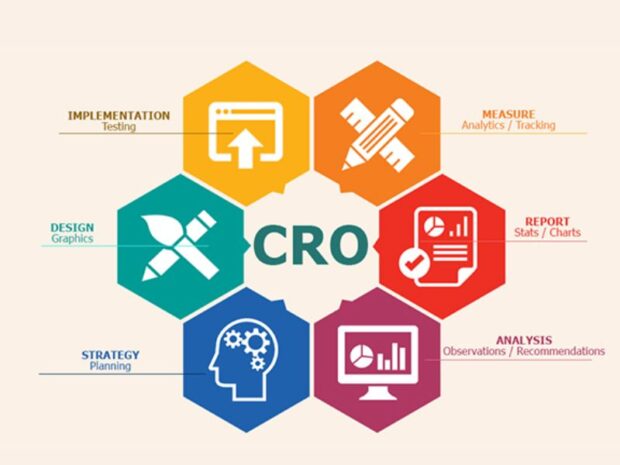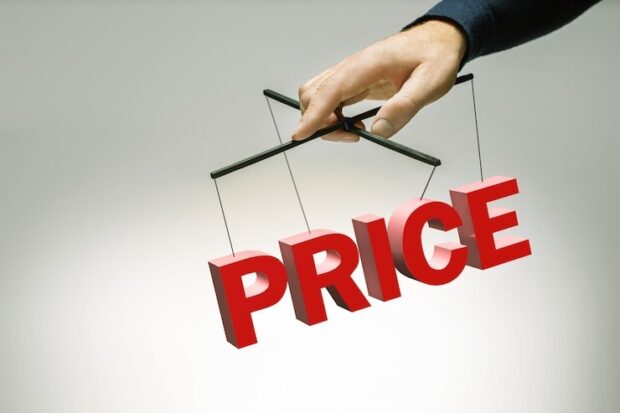In the ever-evolving world of e-commerce, where every click and second counts, businesses continuously strive to find the golden key that unlocks a significant increase in online sales. Interestingly, the answer often lies not in sweeping overhauls but in the meticulous fine-tuning of various website elements—a practice known as Conversion Rate Optimization (CRO).
This approach, coupled with a strategic understanding of customer behavior and emerging retail challenges, has proven to be a game-changer for numerous companies.
The Power of Conversion Rate Optimization

Conversion Rate Optimization (CRO) is the unsung hero of the e-commerce world. It involves making small, systematic changes to various parts of a website to enhance the user experience and, ultimately, increase sales.
This might include tweaking the color of a call-to-action button, adjusting the layout of a landing page, or refining the copy of product descriptions. Although these alterations may seem insignificant when viewed individually, collectively, they can lead to a dramatic improvement in a website’s performance.
The process of CRO isn’t guesswork; it’s a science that relies heavily on data. Tools like Google Analytics play a crucial role in this process, offering insights into key performance indicators such as bounce rates, page views, and conversion rates.
By getting to know how users interact with a site, businesses can make informed decisions that lead to more effective and personalized user experiences. Embracing CRO strategies can be a game-changer for online businesses, and seeking expertise from a professional SEO agency like SEOAgencyLeeds can amplify these efforts.
Price Anchoring and Copy Tailoring

Price anchoring is another effective strategy used in the context of CRO. This tactic involves presenting customers with different price points to anchor their perception of value.
For example, by showing a higher-priced item next to a more reasonably priced one, customers are more likely to perceive the latter as a bargain, increasing the likelihood of a purchase. Similarly, tailored copy changes, particularly in call-to-action (CTA) wording, can have a profound impact on conversion rates.
The difference between a generic “Click Here” and a more compelling “Get Your Free Trial Now!” can be the difference between a user bouncing or making a purchase. Personalized and action-oriented copy resonates more with potential customers, guiding them smoothly through the sales funnel.
The Crucial Role of Page Loading Speed

In the fast-paced online world, page loading speed is critical. Studies have shown that load times of more than three seconds can lead to a significant increase in bounce rates.
Online shoppers are notoriously impatient, and a delay of just a few seconds can lead to lost sales. To combat this, businesses employ Content Delivery Networks (CDNs) and caching to speed up their websites.
By ensuring that their sites load quickly, businesses can keep potential customers engaged and significantly reduce the chance of them abandoning their carts.
The Significance of Web Analytics
Monitoring metrics such as leads, time on site, and highest converting pages is essential for measuring sales performance and understanding customer behavior. This data not only helps in identifying what works but also pinpoints areas for improvement.
Agencies like WebFX leverage these insights to implement effective digital marketing strategies, drive traffic, and boost sales for businesses across various industries.
Adapting to Modern Consumer Expectations

The retail landscape is shifting, with traditional strategies like heavy discounting becoming less effective and often leading to margin erosion. Today’s consumers expect more than just competitive prices; they seek a seamless and personalized shopping experience.
Challenges such as finding parking, entering stores, and returning items add to customer frustration in physical retail settings. However, these pain points represent opportunities for online retailers to cater to modern consumer expectations.
Improving the online shopping experience can significantly enhance customer loyalty and spending. Strategies such as providing personalized services, ensuring efficient returns, and optimizing every touchpoint along the customer journey can drive substantial increases in credit card spending.
Moreover, retailers must recognize the brief window they have to meet customer expectations before startups and new market entrants disrupt the landscape. Investing in customer experiences, both online and offline, is crucial for long-term success.
By reducing reliance on sales and discounts and focusing instead on value-added services, retailers can distinguish themselves in a crowded market. The potential rewards are significant, with improved customer experiences potentially driving over $200 billion in additional credit card spend.

FAQ
Can Conversion Rate Optimization (CRO) Be Applied to Any Type of Website?
Yes, CRO can be applied to any type of website, whether it’s an e-commerce platform, a B2B website, a SaaS product page, or even a non-profit’s donation page. The key is to understand your audience and test changes that can enhance user experience and engagement relevant to your specific goals.
How Do I Know Which Elements on My Website Should Be Changed for Better Conversion Rates?
Start by using web analytics tools to identify pages with high traffic but low conversion rates. Look at user behavior on these pages to pinpoint potential problem areas. Common elements to test include headlines, CTA buttons, images, product descriptions, and page layout. A/B testing can help determine which changes lead to better performance.
How Often Should I Perform CRO Tests on My Website?
CRO is an ongoing process, not a one-time event. It’s best to continuously test and analyze the results, making incremental changes over time. However, each test should run long enough to collect significant data, typically a few weeks, depending on your website’s traffic volume.
Are There Any Common Mistakes to Avoid In CRO?
One common mistake is changing too many elements at once, which makes it difficult to determine what impacted the conversion rate. Another mistake is not allowing enough time for a test to reach statistical significance, leading to premature conclusions. Additionally, neglecting mobile user experience can be detrimental since a significant portion of web traffic comes from mobile devices.
How Does Page Loading Speed Affect Online Sales, and How Can I Improve It?
Page loading speed directly impacts user experience and conversion rates. Slow loading times increase bounce rates and decrease customer satisfaction. To improve loading speed, optimize image sizes, leverage browser caching, reduce server response time, and minimize the use of heavy scripts and plugins.
What Is the Role of Personalized Content in Increasing Online Sales?
Personalized content significantly enhances the shopping experience by catering to the individual preferences and needs of the user. This can include personalized product recommendations, tailored email marketing campaigns, and dynamic content that changes based on user behavior. Personalization helps in building customer loyalty, increasing repeat purchases, and improving overall conversion rates.

Final Words
The key to unlocking a major increase in online sales lies in understanding and optimizing the minute details that enhance the user experience. Through the meticulous application of CRO principles, leveraging analytics, and adapting to consumer expectations, businesses can achieve remarkable improvements in their online performance.
In the digital age, where competition is fierce, and customer loyalty is fleeting, these small changes can lead to major successes.
 Jewel Beat
Jewel Beat

